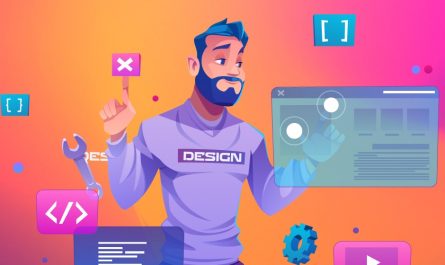Benefits of a Good Design Strategy in New Media Platforms
The digital landscape has changed drastically over the past decade. New media platforms and technologies have become increasingly accessible, turning the traditional models of content creation and distribution upside down. As these new opportunities continue to emerge, businesses need to understand how to best utilize them in order to maximize their reach and impact. This means approaching design strategies from a more holistic perspective and utilizing various forms of visual storytelling to capture the attention of your audience.
At its core, designing for new media is about understanding how to create engaging experiences that drive interaction between brands and customers. It’s about strategically considering visuals, sounds, and interactions that can capture attention without overwhelming the user or detracting from the experience as a whole. A good design strategy should consider how users interact with content on different platforms from the way they scroll through an article on Twitter to how they engage in an immersive eCommerce environment built on AR/VR technology.
In order to effectively leverage these opportunities and create positive user experiences, businesses need to be aware of the different types of design as well as trends developing in new media platforms. From this knowledge, you can create innovative solutions tailored specifically to each platform’s unique characteristics.

Exploring Different Types of Design
Good design requires careful consideration of the different elements at play that make up any given experience — visuals, sound effects, animations, copywriting, images, and videos are just some examples. Effective design must also consider other factors such as context which includes understanding how people interact with certain platforms (social versus search engine optimization) or what kind of device someone might be using (mobile versus desktop).
When it comes to exploring different types of design for new media platforms, there are several options available depending on your needs:
- Graphic Design: Graphic design is used by businesses across all industries for various purposes such as creating logos or manufacturing signs & product packaging designs; when it comes to digital space graphic designers often work on creating infographics, illustrations & website layouts
- UX/UI Design: UX stands for User Experience Design which focuses more on creating better user interfaces based on research & data whereas UI stands for User Interface Design which involves coding & programming principles; both disciplines work together hand-in-hand in producing great products
- Motion Graphics: Motion graphics involve combining still images with animation or sound effects; it’s becoming increasingly important in today’s age where people expect dynamic visuals that engage their senses
- Video Production: Video production is one of the fastest growing fields within new media due to its prevalence in content marketing; successful video producers need a good understanding of storytelling techniques & audio/visual editing skills

How To Leverage New Platforms
Understanding certain trends can provide valuable insights into how we should approach our designs when it comes to leveraging new media platforms. Here are some current trends impacting different forms of digital media that every business should stay up-to-date on:
Data Visualization – Data visualization provides an easy way for people to interpret complex information quickly without having access to extensive technical knowledge; many companies are starting to use data visualization tools like Tableau or Qlikview instead of traditional charts & graphs due its enhanced capabilities
Mobile First – With more than 50%+ usage coming from mobile devices globally this year alone mobile-first has become almost mandatory when it comes to designing content; being aware of layout constraints & UI considerations can be a critical part of success when designing content specifically mobile devices
Augmented Reality – Augmented reality (AR) is slowly pushing virtual reality (VR) out spotlight due to its practical applications like virtual shopping stores or giving shoppers the ability to visualize products within their own homes before committing to purchase
AI Technology – Artificial intelligence technology is making huge waves across all industries due to its capacity to automate mundane tasks & provide companies with valuable marketing insights enabling them better target audiences beyond demographics & numerical data
Storytelling – Last but not least storytelling remains one most important aspects driving the success of digital campaigns, especially when considering modern SEO practices; although keyword stuffing is not a favorable technique narrative based stories have been gaining traction amongst Google algorithms since 2017 providing brands with opportunity come up creative ways capture attention potential customers.



